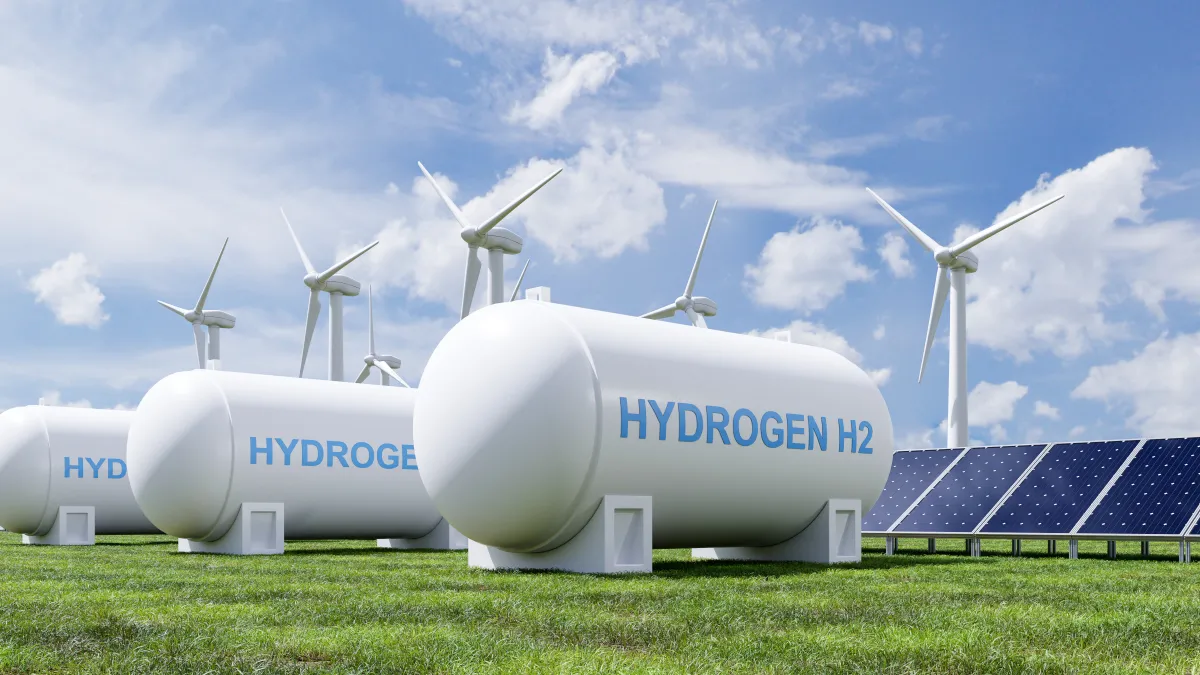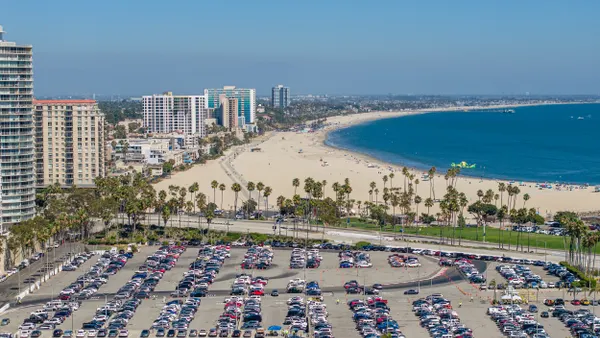Dive Brief:
- The U.S. Department of Energy on Friday announced its selection of seven regional hydrogen hubs in Appalachia, California, the Gulf Coast, the Mid-Atlantic, the Midwest, the Pacific Northwest and a Heartland hydrogen hub comprising Minnesota and the Dakotas.
- The hubs are expected to produce a collective three million metric tons of hydrogen annually, equivalent to about a third of the 2030 U.S. production target, according to DOE.
- Each hub focuses on a different application and production method for hydrogen. The selection of several hubs focused on the use of natural gas and carbon capture to make hydrogen drew criticism from several environmental organizations and think tanks.
Dive Insight:
After two years and dozens of applications, the U.S. is set to launch seven regional hydrogen hubs across the country with $7 billion in funding.
The bipartisan infrastructure bill passed in 2021 originally set aside $8 billion to create at least four hydrogen hubs, but massive interest that spurred dozens of applications led the DOE to expand the program to include at least a half dozen official hubs. The remaining $1 billion not dedicated to the geographic hubs themselves will be spent on initiatives to support demand for clean hydrogen.
Friday's selection of seven hubs, each with its own area of emphasis, was not without controversy. While the Pacific Northwest hub will focus on producing clean hydrogen exclusively from electrolysis, several other hubs intend to focus specifically on fossil-dependent technologies. The Appalachian Hydrogen Hub intends to focus on producing hydrogen from natural gas, while the California hub will use biomass and the Gulf Coast hub will use both natural gas and carbon capture.
“Our research has shown that the government is significantly understating the impact of producing blue hydrogen [derived from fossil fuels] on global warming,” David Schlissel, director of resource planning analysis at the Institute for Energy Economics and Financial Analysis, said in a statement. “The reality is that blue hydrogen is not clean or low-carbon. Pursuing this technology is wasting precious time and diverting attention from investing in more effective measures to combat global warming like wind and solar resources, battery storage and energy efficiency.”
Several of the hubs will also focus on specific end-uses of hydrogen. California will focus on heavy-duty trucking and transportation, while the Heartland Hydrogen Hub in the Dakotas and Minnesota will emphasize fertilizer production for use in the region's agricultural sector. The Midwest Hydrogen Hub comprised of Illinois, Indiana and Michigan will focus on decarbonizing heavy industry, including steel and glass production as well as power generation.
Meanwhile, the Mid-Atlantic Hydrogen Hub in Pennsylvania, Delaware and New Jersey will focus on the use of nuclear energy to produce clean hydrogen.
“Today, we are on the cusp of a significant breakthrough in the pursuit of cleaner, more sustainable energy solutions,” Sasha Mackler, executive director of the Bipartisan Policy Center’s Energy Program, said in a statement. “The H2Hubs program represents a monumental stride towards harnessing the potential of clean hydrogen to decarbonize multiple sectors, address our pressing environmental challenges, and launch a new clean economy.”
Although Friday's announcement included funding allocations for each of the individual hubs, it also indicated that funding negotiations and selections are not final. Hubs announced on Friday will be subject to a negotiation process and DOE may cancel negotiations and rescind a hub's selection during this process, according to the announcement.











